You know that catchy ad that always sticks in your head? The one with the jingle you find yourself humming without realizing it, or the slogan that’s so clever it makes you smile?
That’s the power of effective ad copy. When done right, a few well-chosen words or a memorable tagline can capture attention, spark interest, and drive sales. As a marketer, your goal is to create ad copy that connects with your audience and compels them to take action.
Whether you’re looking to improve your own skills or simply draw inspiration from the best, these 20 ad copy examples have a lot to teach about how to write copy that sells.
What Is Ad Copy and Why It Matters
Ad copy refers to the words and images in an advertisement that are designed to persuade readers to take action. As a business owner, ad copy is crucial because it's your opportunity to connect with potential customers and convince them your product or service can meet their needs.
To write effective ad copy, you need to:
- Focus on your target audience. Determine their interests, desires, and pain points so you can tailor your message directly to them. Mention the specific benefits of your offering that match what they're looking for.
- Highlight the key benefits. Clearly state the top three reasons why someone should buy from you. Use descriptive words and phrases to help the reader visualize how these benefits will improve their life or work.
- Create a sense of urgency. Give the reader a reason to act now rather than later. For example, mention a sale that's ending soon or limited product quantities. FOMO (fear of missing out) can be an effective motivator.
- Include a clear call-to-action. Tell the reader exactly what you want them to do next, whether it's to call a phone number, visit your website, or come into your store. Make it easy for them to take that next step.
- Review and edit. Go back through what you've written and look for ways to tighten your copy and improve its persuasive power. Get feedback from others as well to identify any areas that could be stronger or clearer.
With compelling ad copy that inspires your audience and gives them a reason to act fast, you'll turn more viewers into paying customers. Strong copy, combined with eye-catching visuals, is the key to boosting sales and making your marketing efforts pay off.
Emotional vs Rational Ad Copy: Which Is More Effective?
When crafting an effective ad, you have to decide whether to appeal to emotions or logic. An emotional appeal tugs at the heartstrings, while a rational appeal lays out the facts. Which approach is more persuasive? The truth is, it depends on your audience and goals.

Emotional ads
- (+) Create a memorable experience.
- (+) Connect with the audience on a personal level.
- (+) Encourage impulse purchases.
- (–) Some viewers may see overly emotional ads as manipulative.
Rational ads
- (+) Focus on practical benefits and features.
- (+) Educate the audience.
- (+) Build trust in the brand.
- (–) Can seem dull or sterile if taken too far.
The most compelling ads find the sweet spot between emotional and rational. They:
- Balance emotions and facts. For example, an ad for eco-friendly products might highlight how they benefit the planet (emotional) as well as save money (rational).
- Share a story. A story that stirs emotions but also highlights useful features or benefits is ideal. For instance, an ad could show how a product improved someone's life in a meaningful way.
- Use an upbeat, friendly tone. A positive tone that makes an emotional connection will keep viewers engaged while you present the facts and figures.
In the end, the most persuasive ads tap into emotions but also give the audience logical reasons to buy in. Blend emotional and rational appeals, and your ad copy will be well on its way to making a convincing case to customers.
Long vs Short Copy: Finding the Right Balance
When crafting your ad copy, finding the right balance between long and short copy is key. Both have their advantages, so consider your goals and audience to determine what will work best.
Long Copy
Longer copy, roughly 150-500 words, works well when you have a complex product or service to explain. It gives you space to highlight features, benefits and details that help build trust and credibility. Long copy also tends to convert better for high-ticket or niche items. However, long copy requires more attention and time to read, so only use it if absolutely necessary for your message.
Short Copy
On the other hand, short copy around 50-150 words is punchy and gets straight to the point. It captures attention quickly and is easy to read, ideal for fast-paced digital platforms where people have short attention spans. Short copy also tends to work better for impulse purchases or popular, well-known products. Though, the brevity means you have to be extremely clear and concise while still convincing readers to take action.
In the end, test both long and short copy options if possible. See which resonates more with your audience and drives the best response. You may also find a hybrid approach works well.
Whatever you choose, make sure to speak clearly to your customers using simple language they understand. Finding the right balance of long and short copy can help you make a connection and motivate them to buy.
Ad Copy Formulas to Streamline the Writing Process
When writing ad copy, having a formula to follow can help streamline the process. Here are a few tried-and-true formulas to get you started:
Problem-Agitate-Solve
This formula presents a problem your target audience is facing, agitates their pain points, and then presents your product or service as the perfect solution. For example:
Are you tired of wrinkled clothes right out of the dryer? The extreme heat can damage fabrics and cause permanent creases. Our new Steamatic X2000 steamer gently removes wrinkles using high-powered steam, keeping your clothes looking fresh without the damage of a dryer.
Before-After-Bridge
Show your audience where they are now, where they could be, and how your product will bridge the gap. For example:
Before Innovation Pro, project management meant messy spreadsheets, missed deadlines, and wasted hours.
After implementing Innovation Pro, project managers streamline workflows, meet every deadline, and regain valuable time.
Innovation Pro is the project management tool that bridges the gap between where you are and where you want to be.
Features-Benefits-Call to Action
Explain your product's key features, the benefits and value to the customer, and issue a clear call to action. For example:
- Features: 100+ integrations, real-time dashboards, and customizable workflows.
- Benefits: Save time, increase efficiency, and gain valuable data insights.
- Call to Action: Sign up for a free trial today and see how Innovation Pro will revolutionize your business.
Using tried-and-true formulas like these will make writing high-converting ad copy a breeze. Combine them with an attention-grabbing headline and design, and you'll have an ad that sells.
25 Ad Copy Examples Used by Brands
Everyone knows catchy ad copy is key to grabbing attention and driving conversions. Here are 20 examples of creative ad copy that do just that:
Netflix – subway ads

Oatley – newspaper ads

Oatley – wall ads
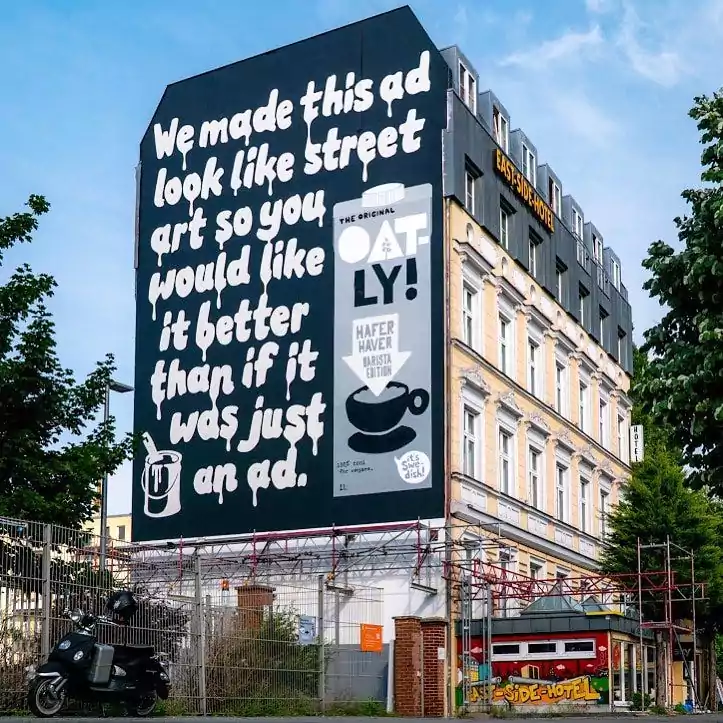
McDonalds – bus stop ads

Subway – Instagram ads
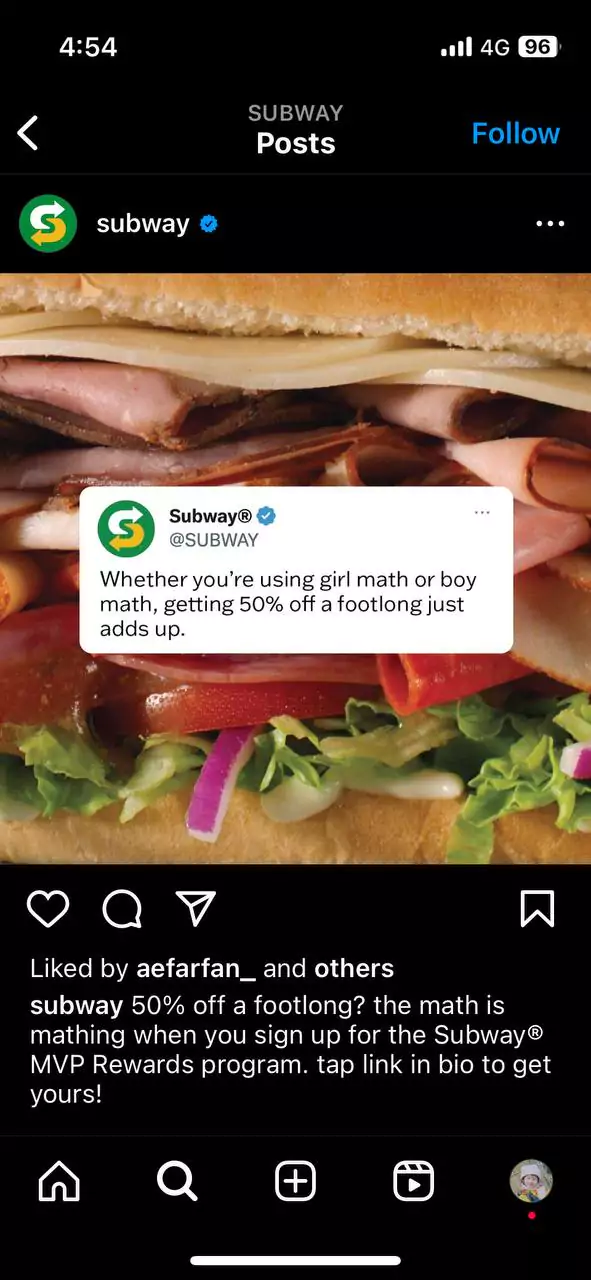
Tubi – billboard ads

Grammarly – YouTube ads

Duolingo – poster ads

Visa – bus ads

Coinbase – poster ads

Ben & Jerry’s – print ads

Bose – X / Twitter ads

Zenyum – SEM ads
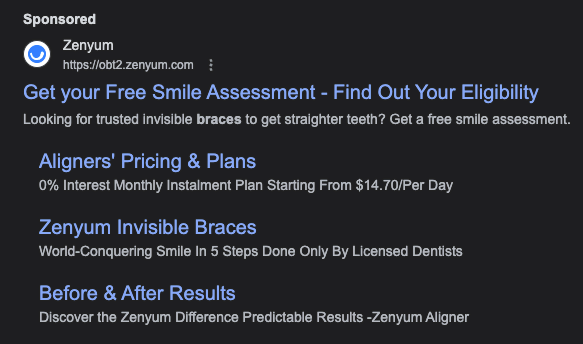
KFC – Facebook ads
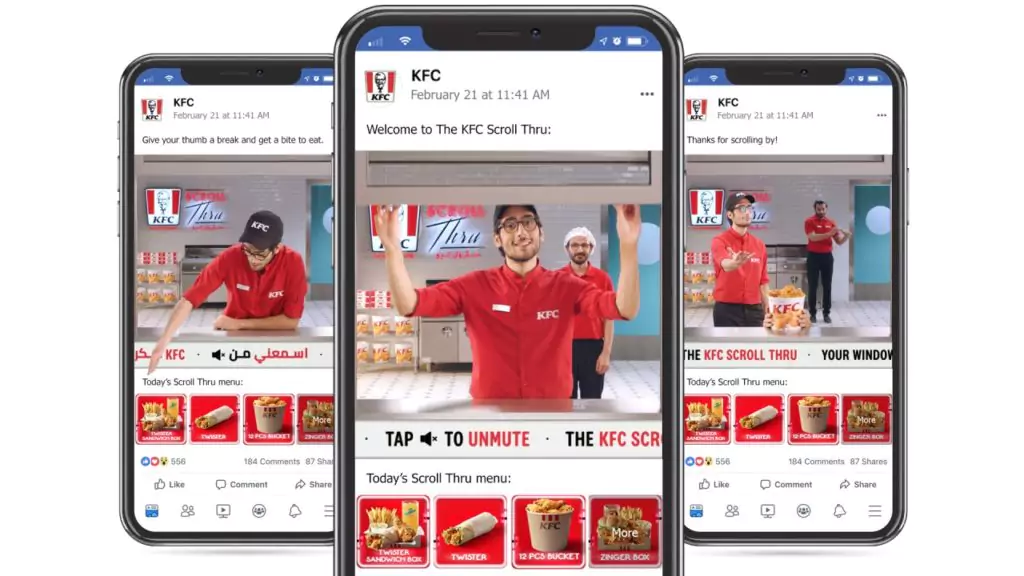
Heinz – magazine ads
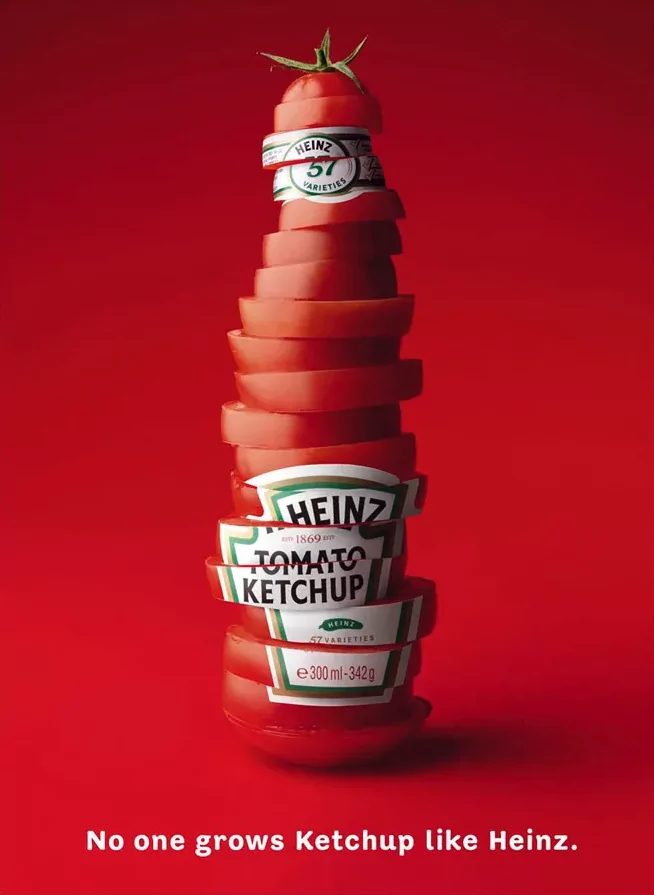
Cadbury – television ads

Semrush – site ads

Burger King – socially relevant ads

NYX – TikTok ads

Popeyes – Instagram story ads

Lay’s – promotional ads

LinkedIn – Linkedin ads
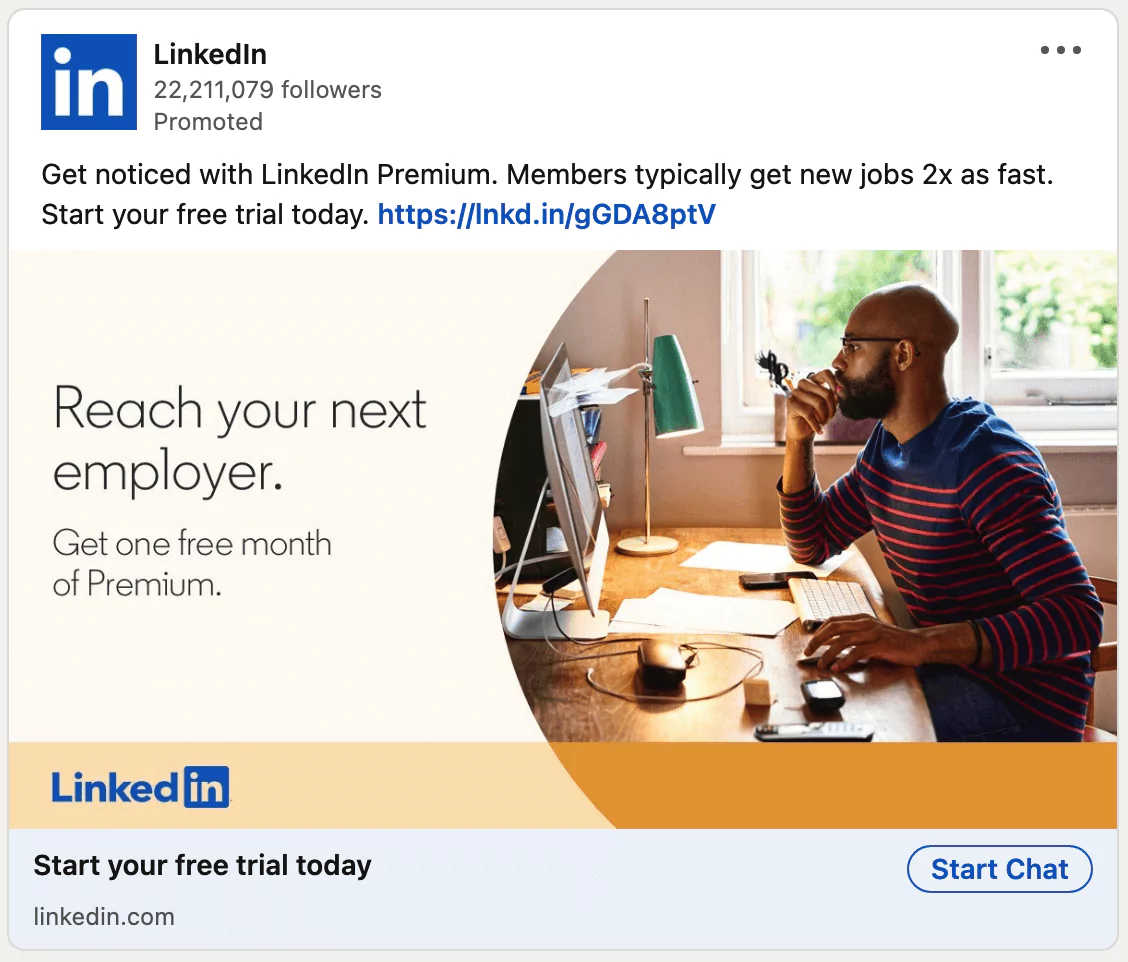
Wendy’s – comparison billboard ads

Ryanair – comparison Twitter ads
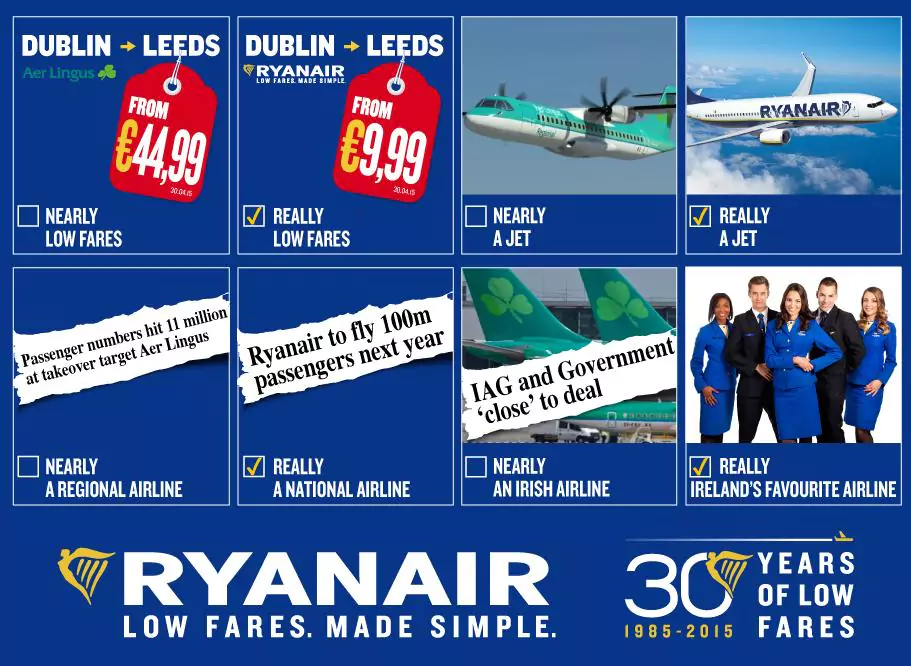
Coca Cola – hashtag ads

Telling a Story Through Ad Copy
Storytelling is one of the most powerful techniques used in advertising. We are naturally drawn to stories because we can relate to them. Effective ad copy often taps into this by telling a short story that highlights how a product or service was useful or made a difference.
For example, an ad for a language learning app could tell the story of someone who struggled with learning Spanish for years. They tried textbooks, CDs, and online courses but nothing stuck. Then they discovered the app and within a few months, they were conversing comfortably. The story shows how the product solved a problem and changed someone’s life for the better.
A story like this in your ad copy helps viewers visualize how your offering may benefit them in a meaningful way. It gives a more compelling reason to act than just listing product features and benefits. Viewers become invested in the outcome and want the same success and transformation for themselves.
Some tips for crafting a good story in your ad copy:
- Focus on one main character. Follow their journey to highlight the key benefits of your product.
- Establish a challenge or problem early on that your product solves. This creates tension and interest in the outcome.
- Describe how the character’s life improved in a relatable way after discovering your product. Bring the story full circle.
- Keep the story concise, around 2 to 3 short paragraphs. Provide enough detail to draw the viewer in but don’t drag it on.
- Use emotive and visual language to help the reader experience the story. Put them in the main character's shoes.
- End by reaffirming how your product can do the same for the viewer. Issue a clear call-to-action to complete the story.
A good story, told well, can turn your ad copy into a powerful motivator. When viewers see themselves in the story, they feel compelled to pursue the same happy ending. So start crafting tales of transformation and success to make your ad copy shine.
How to Write Short Creative Ad Copy for Social Media
When writing short ad copy for social media, keep these tips in mind:
Keep it short and sweet
On social platforms where attention spans are short, less is more. Aim for 50-100 words for Facebook posts and 15-30 words for tweets. Get to the point quickly and avoid unnecessary words and filler.
- Use simple and concise language. Cut out excess articles like “a”, “an” and “the”.
- Write in an active, engaging voice. Address the reader directly with “you” and “your”.
- Ask a question to draw readers in. For example, “Want to learn a new skill in just 5 minutes a day?”
Use catchy and creative headlines
Your headline is the first thing people see, so make it count. A good headline sparks interest and compels readers to stop scrolling.
- Incorporate numbers, superlatives or benefits. For example, “5 Easy Ways to Double Your Productivity” or “The #1 Tool Every Entrepreneur Needs”
- Play on popular phrases or puns. For example, “Lettuce Turnip the Beet on Meal Prepping” for a post on veggie meal prep.
- Use cliffhangers or open-ended headlines. For example, “You'll Never Guess What Happened When...”
Include visuals
On visually-focused platforms like Instagram and Facebook, images and videos are key. Visual content gets more likes and shares.
- Choose high-quality, eye-catching images that match your brand. For Instagram, use a photo that takes up the whole frame.
- Keep text on images short, around 5-15 words. The image should speak for itself.
- Behind-the-scenes videos or livestreams work great on Facebook and Instagram Stories. Give followers a glimpse into your business or creative process.
Mimic your audience's language
Use the lingo and slang of your target audience to sound more authentic and relatable. Stay up to date with the latest terms and references that your demographic is using.
- Browse comments on social media and online forums to see what terms are popular. Use them organically in your copy.
- For a younger audience, be familiar with the latest apps, memes and internet jokes they're engaging with. Subtly reference the zeitgeist without seeming like you're trying too hard.
- Hashtag relevant keywords, challenges or holidays. For example, use #MondayMotivation, #TBT (throwback Thursday) or #FirstDayofSpring.
Following these tips will help you craft short and sweet social media ad copy that sells. Keep experimenting to see what resonates most with your followers. The more you practice, the better you'll get at captivating readers
How to Write Short Creative Ad Copy for Print Ads
To grab attention and persuade readers, ad copy for print ads should be short, sweet, and straight to the point. Focus on the key benefits of your product or service, write conversationally, and include an irresistible call to action.
Keep your headline short and catchy
Your headline is the first thing readers will see, so make it count. Aim for 6 words or less and highlight the biggest benefit or most compelling feature. For example, “Lose 10 Pounds in 10 Days!” or “Earn $500/Week Working From Home!”.
Describe the benefits, not just the features
Readers want to know what’s in it for them. Don’t just list the product features, spell out the key benefits and how it will improve their lives. For example, say “Get in the best shape of your life while still enjoying your favorite foods!” rather than just “New exercise and diet plan now available!”.
Use an engaging and conversational writing style
Write like you talk to a friend. Use an active voice, contractions, and address the reader directly with “you” to create a personal connection. For example, say “You're going to love how much energy you have when you start your day with our new coffee blend!” rather than “Our new coffee blend provides an energy boost to start your day.”.
Include a strong call to action
Tell the reader exactly what you want them to do and how to do it. For example, say “Call 1-800-123-4567 or visit www.website.com today to claim your free trial!” rather than just “For more information, call or visit our website.”.
Use bullet points and double spacing
Short paragraphs, bulleted lists, and double line spacing make ad copy easy to read quickly. Only include one idea or message in each short paragraph.
Following these tips will help you write print ad copy that grabs attention, highlights benefits, speaks conversationally to your audience, and motivates readers to take action. Keep it brief but compelling, focus on the reader, and give clear instructions for how to buy, sign up or get started. With a catchy headline and a persuasive message, your ad is sure to be a success!
Incorporating Social Proof in Ad Copy
To make your ad copy as persuasive as possible, incorporate social proof. Social proof refers to the influence we get from learning about what others are doing or thinking. It's one of the most powerful tactics used in marketing and advertising.
Showcase customer reviews and testimonials
Having real reviews and quotes from satisfied customers is one of the most effective forms of social proof. Share reviews from platforms like Yelp or Google, or feature customer testimonials talking about their experience with your product or service. People will see that others have tried it and been happy with the results.
Highlight how many people use your product
Mention the large number of people, clients, subscribers or followers you have. For example, say something like "Join over 1 million happy customers" or "Used by thousands of businesses worldwide". This establishes your brand as a popular choice that many others trust and use.
Use social media follower counts
Prominently display the number of followers or likes you have on social platforms like Facebook, Instagram and Twitter. Large numbers, especially when increasing over time, demonstrate how popular and well-liked your brand is by the community.
Feature media mentions and partnerships
If your business or products have been featured in media outlets or you've partnered with other established brands, be sure to mention it in your ad copy. Getting validation from authoritative sources acts as social proof that your brand is reputable and high quality.
The more social proof you incorporate into your ad copy, the more persuasive and trustworthy your message will become. People will see that your product is well-liked and used by others, so they'll feel more comfortable giving it a try themselves. Leverage the power of social influence to make your ads as effective as possible.
Using Emotional Triggers in Ad Copy
Using emotional triggers in your ad copy is key to grabbing attention and persuading viewers. Tap into the primal parts of your audience’s brain by focusing on:
- Fear: Playing on people’s fears about missing out on a deal or opportunity is highly effective. Phrases like “only 3 left in stock!” or “sale ends tomorrow!” create a sense of urgency that spurs people into action.
- Excitement: Build excitement around your product or service by using enthusiastic language and promising an experience. For example, “The most advanced, cutting-edge headphones engineered for maximum bass and crystal clear highs.” The thrill of the latest and greatest technology is hard for some to resist.
- Happiness: Help your audience visualize how happy and satisfied they’ll feel with your product. For example, “Treat yourself to silky smooth skin and radiant complexion with our all-natural skincare set.” The promise of health, beauty and self-care ignites feel-good emotions.
- Pride: Appeal to your audience’s sense of pride in themselves and their accomplishments. For example, “You’ve worked hard to build your business...now it’s time to take it to the next level with our exclusive coaching program.” The desire to advance and achieve can be a strong motivator.
- Belonging: Create a sense of community and belonging around your brand. For example, “Join over 10 million coffee lovers who call our roasts the absolute best.” The need to be part of something bigger than ourselves and connect with like-minded people is universal.
Using emotive language and framing your product as the solution to their hopes, dreams, and desires will forge powerful connections with your audience on an instinctual level. Keep testing different emotional triggers to see which resonate most with your target customers.
Ad Copy FAQs: Answering Common Questions About Writing Effective Ads
Why is ad copy important?
Ad copy is the text in your ads that convinces readers to take action. Effective ad copy grabs attention, builds desire, and motivates people to buy or sign up. Strong ad copy is essential for converting viewers into customers or subscribers.
What makes good ad copy?
Good ad copy grabs attention, sparks interest, and compels the reader to take action. Some keys to effective ad copy:
- Catchy headline. An attention-grabbing headline is crucial. Use power words and numbers, ask a provocative question, or highlight an exciting benefit.
- Benefit-focused. Focus on the benefits to the customer, not just the features of your product or service. Explain how it will make their life easier or better.
- Simple and concise. Use short sentences and paragraphs. Get to the point quickly. Don’t overwhelm the reader with too much text.
- Emotional appeal. Tap into emotions like desire, fear, excitement or humor. Create a sense of urgency or scarcity.
- Credible. Back up any claims you make. Build trust in your brand and product.
- Call to action. Give the reader a clear path to follow, whether it’s to buy now, sign up for a free trial, or get a quote. Make it easy for them to take the next step.
How long should my ad copy be?
Ad copy length depends on the medium, but in general:
- Keep headlines to 6 words or less. Shorter is better.
- For social media ads, use 1 to 2 short sentences (less than 20 words total).
- For search ads, use 2 sentences (20 to 30 words total).
- For email subject lines, use 6 to 10 words.
- For landing pages, use 50 to 500 words to fully explain the offer.
Do I need to follow the AIDA model?
The AIDA model is a proven framework for effective ad copy. It stands for:
- Attention: Capture interest with a bold headline
- Interest: Spark desire by describing the product/offer
- Desire: Build excitement by highlighting benefits and key features
- Action: Issue a clear call to action to motivate the reader to buy
Following AIDA helps ensure your ad copy is as persuasive as possible. But you can also experiment with other formulas and see what resonates most with your audience.
Draft Good Ad Copy with Hypotenuse AI
So there you have it, 25 ad copy examples to inspire and motivate you to write copy that sells. Now you just need to put these tips into action. Start by analyzing some of your top competitors' ads or promotions that you find engaging and effective. See what makes them work. Then apply those same techniques to your own ad copy. Remember, it's all about grabbing attention, creating desire, and instilling urgency. With practice, you'll be writing ad copy that converts in no time. Good luck!
P.S. Sign up for a 7-day free trial and experience the creative magic of AI for yourself. Credit card not required.


